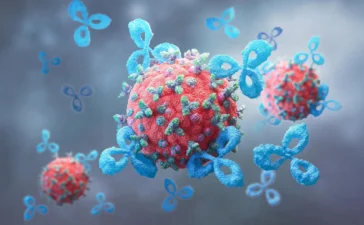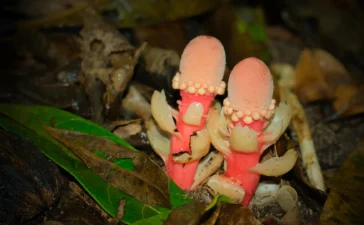By staring into the hellish landscape of Jupiter’s moon Io — the most volcanically active location in the solar system — Cornell University astronomers have been able to study a fundamental process in planetary formation and evolution: tidal heating.
“Tidal heating plays an important role in the heating and orbital evolution of celestial bodies,” said Alex Hayes, professor of astronomy. “It provides the warmth necessary to form and sustain subsurface oceans in the moons around giant planets like Jupiter and Saturn.”
“Studying the inhospitable landscape of Io’s volcanoes actually inspires science to look for life,” said lead author Madeline Pettine, a doctoral student in astronomy.
By examining flyby data from the NASA spacecraft Juno, the astronomers found that Io has active volcanoes at its poles that may help to regulate tidal heating — which causes friction — in its magma interior.
The research published in Geophysical Research Letters.
“The gravity from Jupiter is incredibly strong,” Pettine said. “Considering the gravitational interactions with the large planet’s other moons, Io ends up getting bullied, constantly stretched and scrunched up. With that tidal deformation, it creates a lot of internal heat within the moon.”
Pettine found a surprising number of active volcanoes at Io’s poles, as opposed to the more-common equatorial regions. The interior liquid water oceans in the icy moons may be kept liquefied by tidal heating, Pettine said.
In the north, a cluster of four volcanoes — Asis, Zal, Tonatiuh, one unnamed and an independent one named Loki — were highly active and persistent with a long history of space mission and ground-based observations. A southern group, the volcanoes Kanehekili, Uta and Laki-Oi demonstrated strong activity.
The long-lived quartet of northern volcanoes concurrently became bright and seemed to respond to one another. “They all got bright and then dim at a comparable pace,” Pettine said. “It’s interesting to see volcanoes and seeing how they respond to each other.
This research was funded by NASA’s New Frontiers Data Analysis Program and by the New York Space Grant.
You Might Also Like
Eating more vitamin C can physically change your skin
Scientists at the University of Otago, Faculty of Medicine -- Christchurch Ōtautahi, have identified a direct connection between how much...
MIT scientists strip cancer of its sugar shield
A research team from MIT and Stanford University has developed a new technique designed to push the immune system to...
This “mushroom” is not a fungus, it’s a bizarre plant that breaks all the rules
In the damp shade beneath moss-covered trees, high in the mountains of Taiwan and mainland Japan or deep within the...
A quantum mystery that stumped scientists for decades is solved
A global research team led by Rice University physicist Pengcheng Dai has verified the presence of emergent photons and fractionalized...









